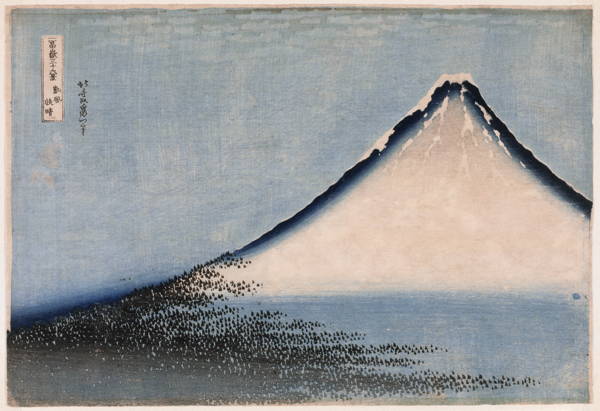From drawing to photography
With a hundred or so prints and several vintage photographs from its collections, the MNAAG invites the public to discover the Japanese landscape in its varied aspects and interpretations, from the most prosaic and anecdotal to the sublime, among which The Great Wave – revealing in the distance the outline of Mount Fuji – is rightly one of the most famous expressions. Japanese Landscapes, through unusual prismatic effects, presents an essential theme of prints illustrated by the greatest names in Japanese prints, such as Katsushika Hokusai and Utagawa Hiroshige or, in the early 20th century, Kawase Hasui. Adopting an innovative approach to compare the influence of prints on photography in 19th Century Japan, with this limited presence but enhanced by photographic masterpieces, the exhibition highlights the proximity between these two means of expression. The Great Wave (Under the Wave off the Coast of Kanagawa) – of which the museum preserves two very beautiful states, will exceptionally be shown for three months, along with a collection of preparatory drawings by Hiroshige for his Tokaido road series (gift of the Société des Amis du Musée Guimet (SAMG) in 2010).
Nature, untamable and beautiful
Ode to the divine spectacle of Nature, expression of the essential harmony between its elements and the human being, the Japanese landscape print lastingly influenced our taste and imagination. All its aspects are explored through the very rich MNAAG collection arisen at the very dawn of Japonism in France. Description of the famous sites in Japan or evocation of the seasons, or portrayal of a deified Nature in striking entities – Mount Fuji being the most famous example –, stages of poetic journeys or else more formal studies with bold perspectives, prints of places offer endless variety. Around this core of famous works, the exhibition allows to discover many pages, sometimes less familiar, through a highly original thematic perspective.
The passage of time, captured on a canvas
Landscape in Japan is a very ancient concept, that culminated in the 19th century through the early Edo Period panoramic cityscapes and the genre scenes associated with them. The exhibition envisages the notion of landscape within a broad context, that of roving and a fascination with the city as it developed throughout the 19th century. Fancied as a poetic wandering that rendered perceptible the imperceptible passage of time, the exhibition also explores a contrario the naturalistic aspects of the landscape print.
Through the lush wealth of the images – prints of every format including the ones for fans, preparatory drawings, and photographs, the most varied themes – night landscapes, evocations of seasons including flowering cherry trees, serial reflection on wandering (including Hokusai’s Thirty-six views of Mount Fuji in 1831), studies on perspective, peopled landscape or setting for legendary scenes – are explored by this exhibition through its novel approach.
It ends with the print’s renewal in the first half of the 20th century, known as shin-hanga, a movement of which the greatest master was Kawase Hasui, an extraordinary colourist and prolific artist. With a very rich palette, his work illustrates the transformations of Japanese space after the country’s modernization. The SAMG accompanied the enrichment of this collection in recent years, and several rare prints by Hasui (1883-1957), dated to before the great fire in Tokyo of 1923, were acquired and will be shown.
PUBLICATION
• Japanese landscapes, from Hokusai to Hasui, exhibition catalogue, A co-edition Réunion des musées nationaux and musée national des arts asiatiques – Guimet. Author: Hélène Bayou, chief curator, Japanese collections, MNAAG – Hardcover - 96 pages - 63 illustrations - €13.50
| 








